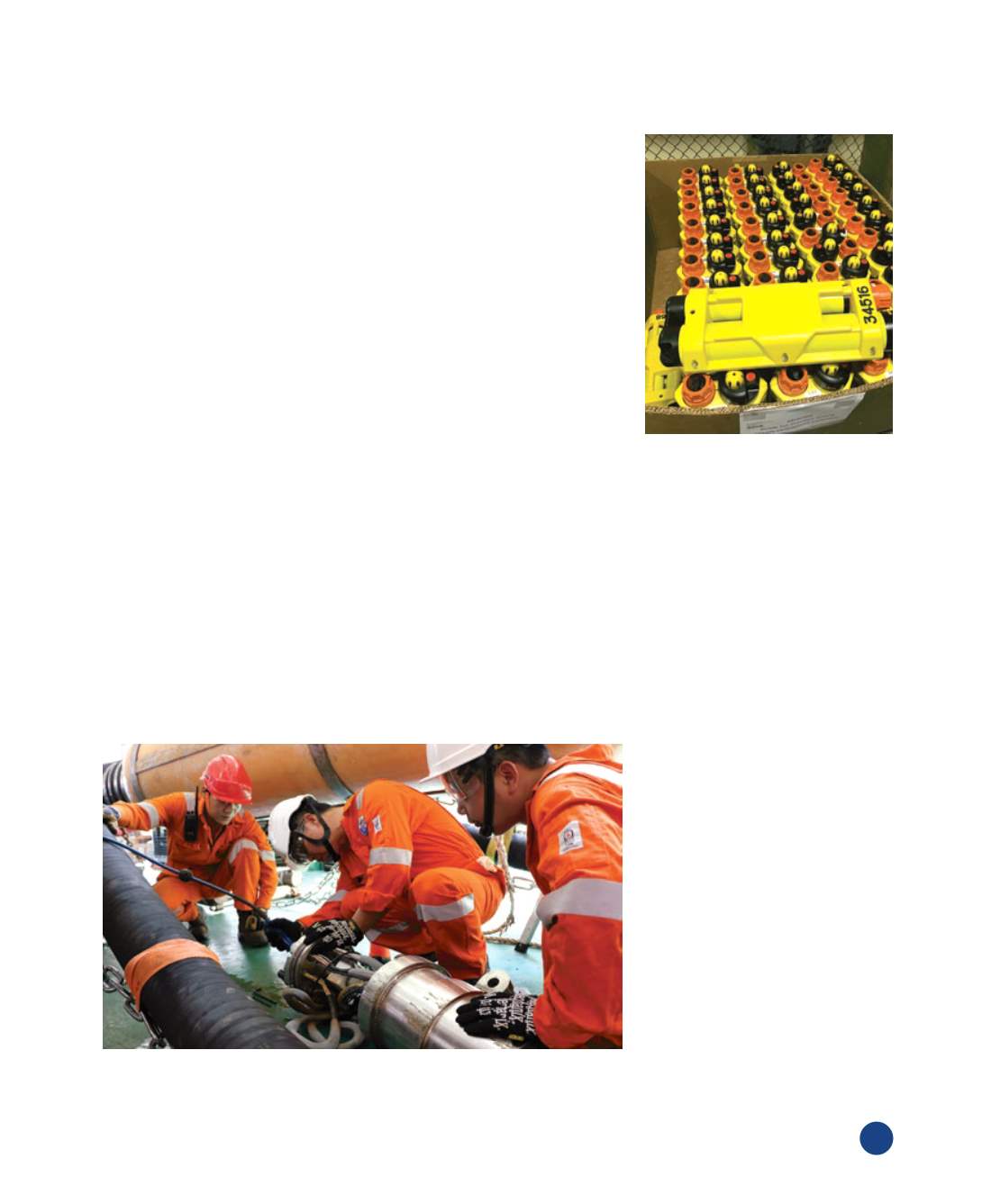

131
THE ENERGY SECTOR
Intan Ocean Bottom Node (OBN)
Seismic Survey – Another
Technological First
As BSP is embarking on a new growth journey
over the coming decades, it is crucial to develop
new approaches to exploration. Currently, BSP is
deploying another exciting new “technological first”
for the country, the Intan Ocean Bottom Node (OBN)
seismic survey, one of the largest and densest OBN
surveys Shell has undertaken globally. Accordingly
dubbed the Intan (Malay for diamond) OBN survey,
this state-of-the-art technology generates a 3D
representation of complex subsurface features at an
unprecedented level of clarity and detail.
Leveraging off a two-year geological review
that highlighted as yet potentially untapped
hydrocarbons in offshore East Brunei, such
new technology will increase the accuracy of
BSP’s subsurface knowledge, allowing for safer
exploration drilling and the targeting of deeper,
more elusive hydrocarbon deposits.
Conventional offshore seismic surveys require a
vessel towing up to 3km of streamers lined with
hydrophones (listening devices) to record reflections
of seismic waves created by an underwater seismic
source echoing back from the Earth’s layers below.
The OBN survey method instead deploys listening
devices (known as nodes) directly onto the sea
floor itself, producing more detailed data which will
lead to identification of complex hydrocarbon traps
around existing fields while also unlocking new,
deeper drilling targets in frontier areas.
Another advantage of this method is the elimination
of the physical constraints associated with towing
long lines of streamers around the vicinity of busy
operational offshore infrastructure. This allows for
safer access closer to such facilities, as well as
sensitive marine areas, and shallow waters.
The project will take about six months which is
equivalent to two billion ‘work-seconds’ carried out
by over 500 offshore employees, resulting in the
acquisition of almost a Petabyte (1,000,000 GB) of
raw seismic data in an area that has more than 100
operational facilities.
The project is not just about technology and data; it
is also an opportunity to develop local capabilities
and skillsets. BGP Inc., who won the tender to
conduct the survey, has already recruited 27 talented
Bruneian technical professionals to work alongside
international seismic experts for rapid, on-the-job
transfer of knowledge. This is an excellent opportunity
for Bruneians to be directly involved and work in a
complex and technologically-challenging project.
To fully benefit from the huge volumes of high-
resolution data generated, BSP invested in a cutting-
edge seismic interpretation system. The software
can sort through large volumes of seismic data in
hours when it could take weeks or months for a
person to do the same task. Two Bruneian “early
adopters” were sent to Houston, Texas, to receive
training for the system to become operational in
BSP end of 2019. This will also inspire the team to
use novel digitalisation techniques, furthering BSP’s
growth journey and securing the talent pipeline for
BSP through capability building.
This is similar to the Rasau 3D Seismic project, one
of the most advanced and largest onshore surveys
BSP has undertaken in more than 20 years, that
ultimately unlocked previously unknown onshore
gas reserves in 2014. Thanks to Rasau’s seismic
Intan Ocean Bottom Node (OBN) Seismic Survey: source maintenace onboard vessel Argus 2
Some of the 9,000 nodes that record
the survey data









